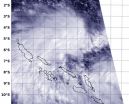INFORMATION:
A Joint Fire Sciences Program Grant funded this research.
Yosemite forest fire example of possible things to come
2015-06-30
(Press-News.org) Forest composition, ground cover and topography are the best predictors of forest fire severity in the Western U.S., according to Penn State physical geographers who also see that the long history of fire exclusion on federal lands leads to uncharacteristically severe burns and potentially changes the dynamics of forests and their recovery.
A hunter's illegal campfire in Stanislaus National Forest adjacent to Yosemite National Park started what would become the Rim fire, the third largest fire in California history, that burned from August through October 2013. The fire burned about 400 square miles inside and outside Yosemite, with 78 square miles burned on the worst day.
"We would never be able to do an experiment on this, never be able to burn the forest in this way, so this natural experiment is a perfect opportunity to see what happens," said Alan H. Taylor, professor of geography.
Taylor and Lucas Harris, graduate student in geography, studied the forest's recovery in the aftermath of the Rim fire. They report their results in the current issue of Ecosystems.
"This area burned at uncharacteristically high severity and did so even though fire weather was not particularly extreme," said Taylor. "The fire does not appear to have restored the forest to before fire suppression, but altered it."
Forest fires occur naturally, usually initiated by lightning strikes. Native Americans also started fires accidently or deliberately to improve plant growth and hunting.
"If a forest burns every ten years, ponderosa pine is pretty fire resistant," said Harris. "But after 100 years of fire suppression, there are a lot of pine needles on the forest floor and they are highly flammable. We found areas of ponderosa pine burned more severely than areas with other trees."
The U.S. Forest Service in the early 1900s instituted a policy of total fire suppression or fire exclusion in the forests they managed. Taylor and Harris looked at fire severity from 1899 in Yosemite, the last year a fire burned in the study area, for a baseline of forest composition and fire's effects on the forest. They sought to determine the factors influencing the severity of the Rim fire and whether the Rim fire's patterns were outside those of historic variability.
"Fuels and terrain were the major factors contributing to the severity of the forest fire," said Harris. "The only one of these that can be controlled is the fuel."
In some areas that have not burned for 100 years, workers go in and remove underbrush -- herbaceous plants, shrubs and small trees -- to reduce fuel load, but this is very labor intensive. Also, controlled burning is sometimes used to reduce the fuel load on the ground and the underbrush. Big Oak Flat, the area under study, is a never-logged wilderness area, so burning is the only possibility, but sometimes there is too much fuel to control the burns.
"In pine forests where fires naturally occur every five to 10 years, 100 years of fire exclusion creates an understory with abundant surface fuel and small trees that allow fires to move into the tree canopies," said Taylor. "Normally, with frequent fires, only the understory burns with some burn scarring of tree trunks, but the trees survive. However, in Big Oak Flat during the Rim fire, there was an unusually high proportion of moderate and high severity fires compared to 1899."
Once the fires move into the canopy, they can kill the forest. Fire suppression also changes the types of trees in the forest. Since the 1899 fire, a lot more white fir populated the forests, according to the researchers.
"When you have severe fires, there is a potential for the vegetation to switch to shrubs," said Taylor. "If these shrubs burn again before the trees can re-establish, the forest won't recover and you are left with shrub lands."
To mitigate the situation, the researchers suggest that it might take multiple low to moderate severity controlled burns to restore the forest to one that self-regulates through natural periodic fires in small areas.
ELSE PRESS RELEASES FROM THIS DATE:
Atomic force microscope advance leads to new breast cancer research
2015-06-30
WEST LAFAYETTE, Ind. - Researchers who developed a high-speed form of atomic force microscopy have shown how to image the physical properties of live breast cancer cells, for the first time revealing details about how deactivation of a key protein may lead to metastasis.
The new findings also are providing evidence for the mechanisms involved in a cell's response to anti-cancer drugs, said Arvind Raman, Purdue University's Robert V. Adams Professor of Mechanical Engineering.
In atomic force microscopy (AFM), a tiny vibrating probe called a cantilever passes over a material, ...
Water: The province of provinces
2015-06-30
This news release is available in French. Montreal, June 30, 2015 -- Unsafe drinking water is a topic usually connected to the developing world. But the regular recurrence of boil-water advisories, and widely publicised outbreaks in towns like Walkerton and Kashechewan have shown that, even in Canada, clean water cannot be taken for granted.
The increased scrutiny that arose from such issues has resulted in widespread criticism of the uneven drinking water regulation among Canada's provinces and territories.. However, centralizing water regulation is not necessarily ...
NASA sees new depression forms near Solomon Islands
2015-06-30
The Southern Pacific Ocean Tropical Cyclone Season just got an extension with the birth of a new tropical depression near the Solomon Islands. NASA's Aqua satellite passed over the new depression and saw that it was already affecting some of the islands.
The Solomon Islands make up a nation that consists of hundreds of islands in the South Pacific.
The MODIS or Moderate Resolution Imaging Spectroradiometer instrument aboard NASA's Aqua satellite captured a visible image of Tropical Depression 25P as it was forming in the Southern Pacific, just north of the Solomon ...
Suomi-NPP satellite sees formation of Tropical Depression Chan-Hom
2015-06-30
NASA-NOAA's Suomi NPP Satellite passed over the newborn ninth tropical depression of the Northwestern Pacific Ocean typhoon season on June 30.
At 02:55 UTC (10:55 p.m. EDT, June 29), the VIIRS or Visible Infrared Imaging Radiometer Suite (VIIRS) instrument aboard NASA-NOAA's Suomi satellite captured a visible image of the newly developed depression. The VIIRS image revealed bands of thunderstorms wrapping into the low-level center from the north and western quadrants.
VIIRS collects visible and infrared imagery and global observations of land, atmosphere, cryosphere ...
How small genetic change in Yersinia pestis changed human history
2015-06-30
CHICAGO -- While studying Yersinia pestis, the bacteria responsible for epidemics of plague such as the Black Death, Wyndham Lathem, Ph.D., assistant professor in microbiology-immunology at Northwestern University Feinberg School of Medicine, found a single small genetic change that fundamentally influenced the evolution of the deadly pathogen, and thus the course of human history.
In a paper published in Nature Communications, Lathem and first author Daniel Zimbler, Ph.D., a Feinberg post-doctoral fellow, demonstrated how the acquisition of a single gene caused the ...
Repeated courses of antibiotics may profoundly alter children's development
2015-06-30
June 30, 2015, NEW YORK -- A new animal study by NYU Langone Medical Center researchers adds to growing evidence that multiple courses of commonly used antibiotics may have a significant impact on children's development.
In the study, to be published online June 30 by the journal Nature Communications, female mice treated with two classes of widely used childhood antibiotics gained more weight and developed larger bones than untreated mice. Both of the antibiotics also disrupted the gut microbiome, the trillions of microbes that inhabit the intestinal tract.
Overall, ...
New cardiac arrest recommendations: Increased CPR/AED training will improve survival rates
2015-06-30
Washington, DC - June 30, 2015 - A new report released today from the Institute of Medicine calls for a campaign to promote public education and training opportunities to reduce barriers to the provision of bystander CPR and defibrillation.
Annual rates of CPR and AED use by bystanders remain less than three percent in the United States even though evidence indicates that its use significantly improves cardiac arrest survival. The American Red Cross strongly supports the IOM's recommendation to encourage training through employers, local public health departments, schools ...
Spouses & relatives of celiac disease patients at risk for autoimmune diseases
2015-06-30
Bethesda, MD (June 30, 2015) -- Both spouses and first-degree relatives of patients with celiac disease are at increased risk of nonceliac autoimmune disease, according to a study in the July issue of Clinical Gastroenterology and Hepatology, the official clinical practice journal of the American Gastroenterological Association. This risk represents a mixture of genetic, environmental and ascertainment bias mechanisms.
"The prevalence of celiac disease in first-degree relatives of individuals with celiac is approximately 10 percent. Despite these findings, little is ...
Pinaverium shows promising results for treatment of irritable bowel syndrome
2015-06-30
Bethesda, MD (June 30, 2015) -- Pinaverium offers quick and effective relief of irritable bowel syndrome (IBS) symptoms, according to clinical trial results published in Clinical Gastroenterology and Hepatology, the official clinical practice journal of the American Gastroenterological Association.
Pinaverium bromide (pinaverium), an antispasmodic, is used widely in many countries around the world, including European countries, Canada and Mexico. However, original clinical studies on pinaverium are scarce and there has been no convincing evidence for its effectiveness ...
Vitamin A supplementation may cause the immune system to 'forget' past infections
2015-06-30
Although vitamin A supplementation can have profound health benefits when someone is deficient, new evidence is emerging to show that vitamin A supplementation above and beyond normal levels may have negative health consequences. A new research report published in the July 2015 issue of the Journal of Leukocyte Biology may help to explain why too much vitamin A can be harmful. Too much vitamin A shuts down the body's trained immunity, opening the door to infections to which we would otherwise be immune. This study adds to the arguments that vitamin A supplementation should ...


